What Are Chatbots & How They Will Change Social Media Marketing in 2019?
What are chat bots? And how will they change social media marketing in 2019? We take a look at Facebook chat bots themselves, plus a selection of social media chat bot tools that allow you to create automated messages and integrate seamlessly with your website or mobile app. The robots are here!
Don’t freak out, but the bots are taking over.
Well, sort of.
There’s been plenty of buzz in recent years over the rise of artificial intelligence (AI). From increased productivity to automation, businesses have been itching to hop on the AI bandwagon ASAP to reap the benefits.
Enter the world of chatbots.
Once reserved for big box brands, businesses of all shapes and sizes are taking advantage of bots.
Looking to provide stellar customer service and convert more customers?
Bots can make it happen.
And the good news? Chatbots are no longer in their infant stages. We now have a solid idea of what makes an effective bot, especially on social media.
Given how prevalent chatbots have become for brands and customers alike, there’s arguably no better time than now to understand their upside in 2019 and beyond.
What Are Chatbots, Anyway?
Let’s get down to basics.
A chatbot is a messaging program that’s mean to imitate human conversations with users. When a human user offers questions and queries, the chatbot replies based on an AI program which provides the answers.
Ideally, conversations with chatbots should mimic conversations you’d have with an actual person.
Traditional chatbots can be standalone messengers, while social chatbots integrate with platforms such as Facebook Messenger.
Chatbots are all the rage right now, but aren’t exactly breaking news. They’ve actually been around in some form or another for decades, with 2008’s Cleverbot providing a prime example of what back-and-forth with an AI program looks like.

However, services like Cleverbot are a novelty compared to how brands are using social chatbots today. Interest and investment in AI among businesses and consumers alike is at an all time high as companies better understand the financial implications of bots.
Here’s a good example of a modern social chatbot from financial service Cleo. Check out how the bot onboards the user and teaches about its service through simple responses that eventually result in a call-to-action.
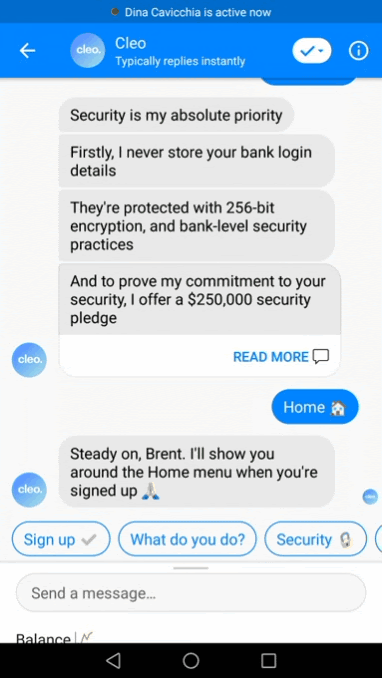
As social chatbots have evolved, brands have found ways for bots to effectively do the following:
- Address customer service concerns
- Recommended products and services
- Provide a knowledge base for their product
- Create or edit account information
- Qualifying leads
Not bad for a bot, huh?
Why Modern Customers Are Warming Up to Chatbots
On the surface, bots may seem like little more than a sort of “shiny new toy.”
Sure, they look impressive. But are people actually using them?
The answer is a resounding “yes.”
For starters, Facebook notes that the majority of consumers have directly messaged a business within the past three months. There’s a reason why Facebook Messenger bots in particular are booming right now, offering consumers a direct, uninterrupted line of communication with the brands they support.
Still, some brands might have hang-ups about getting on board with bots. Conventional wisdom might make us think that relying on a program is the exact opposite of “good” customer care.
Think again, though.
Below are some key reasons why bots are resonating so much with today’s customers.
Customers Crave Immediacy
Here’s some food for thought: according to Twitter, over half of all users expect a response to customer service concerns within an hour.
And while this expectation might sound insane, there’s no denying that social users expect speedy responses from brands.
Of course, that sort of immediacy is next to impossible without the help of bots. Manual social follow-ups and emails are time-consuming and might take a day or two for someone to realistically deal with.
Unfortunately, your customer might have bounced out of your funnel by then.
In a day and age where customers don’t want to wait, chatbots are a potential lifesaver.
Believe It or Not, Bots > People
Pop quiz: do you think the average consumer would rather speak to a person or a bot?
According to recent research, the answer is surprisingly split.
For example, a 2017 report by Ubisend notes that 69% of people “wouldn’t mind” talking to a chatbot as long as it meant getting down to business faster.
And similar findings from Hubspot note that 40% of consumers “don’t care” whether they’re dealing with a human, granted they’re getting the help they seek.
The takeaway here is that people at large have no qualms with bots, with some actually preferring them to humans
This makes sense in some cases, though. Customers might rather work with a bot rather than hop on a tedious phone call or boring email back-and-forth.
Because many bots are so straightforward, customers get exactly what they need without the fluff or potential time-sink of a traditional customer service interaction.
Bots Mean More Accessibility for Customers
Simply put, chatbots allow brands to be “on” around-the-clock.
Even if the function of a bot is limited versus a flesh-and-blood person, any extra avenue of social customer service is a plus.
In fact, a recent study of American consumers note that 24-hour access was the number one cited benefit of chatbots.
Translation? Businesses using chatbots are inherently more accessible. This especially rings true when it comes to interacting with customers regardless of time-zone or geography.
Why Are Brands Investing in Social Bots?
It’s clear that customers are cool with chatbots.
However, there are more compelling reasons why so many brands are adopting chatbots en masse.
Beyond being an expectation of today’s consumers, here are the major upsides of chatbots for the average business.
Saved Time and Resources
This is the big one.
Again, speedy customer service is an expectation but it’s easier said than done to provide.
If you’re working with a smaller team, chances are you simply don’t have the time or resources to allocate to each and every query in a timely manner.
Chatbots can pick up the slack and, when set up correctly, don’t necessarily require any real-time legwork to do their jobs well.
The initial cost and set-up of a chatbot is a long-term investment, but is also much cheaper and time-efficient than letting customer care eat up your entire schedule. This is also true for tasks such as lead qualification and follow-ups, both of which chatbots can put on autopilot.
That’s exactly are looking toward AI to save some serious time, with some businesses increasing their productivity by 40% as a result.
Providing Better Customer Service
Is it backward to believe that bots could provide better customer service than a person?
Perhaps not.
The bot experts at Drift note that people prefer chatbots to apps, signaling the power of chatbots as a customer service channel. Social bots from the likes of Facebook Messenger allow customers to get in touch without having to download a native app or log-in, which is a nice bonus.
As a result, customers receive a straightforward, seamless experience that’s totally intuitive.
Conversions and Customer Retention
Consider that chatbots and higher conversion rates go hand in hand.
The ability of bots to recommend products and services alone should be enough to pique the interest of businesses, given that recommendations result in more conversions and higher sales.
And if nothing else, chatbots are an emerging channel for customer retention. Whether through automated follow-ups or handling simple “yes” or “no” queries, a well-crafted bot encourages customers to stick around.
What Are the Most Popular Types of Chatbots Out There?
Without a doubt, Facebook Messenger bots are king right now.
As Facebook continues to grow past the 2 billion monthly user mark, Facebook Messenger usage has spiked as well. This spells good news for brands, who have direct access to their customers’ pockets via Messenger chatbot notifications.
Facebook bots can be set up through a variety of third-party services, although the Facebook Developer platform provides a few sample bots for those tech-savvy enough to roll them out.
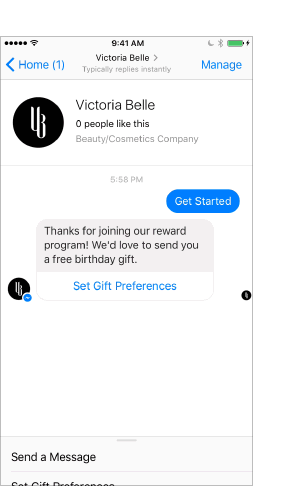
In addition to Facebook, Twitter has also gotten in on the social chatbot game as part of their Creative Canvas. Although not as prevalent as Facebook’s bots, Twitter’s DM bots are likewise able to provide personalized recommendations and back-and-forth with users.
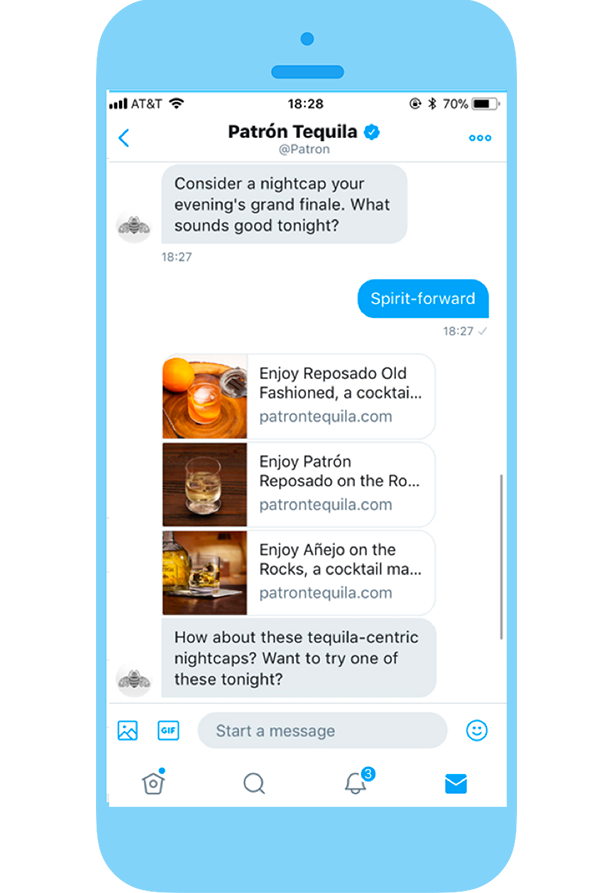
And although not social chatbots per se, the prevalence of homepage chatbots in the world of ecommerce is telling. Tools such as Drift and Freshchat provide subtle, static chat windows where shoppers can get in touch either via bots or real-time customer care.
Here’s a solid example from Bellroy:

10 Real-World Examples of Chatbots in Action
Now, onto the good stuff.
How the heck are brands using bots, anyway?
Just as chatbots have evolved in recent years, the ways that brands are using them has, too. We put together a comprehensive snapshot of the modern chatbot landscape, from simple uses of chatbots to more advanced features and functionalities.
Either way, these examples can provide some much-needed inspiration and motivation for businesses on the fence about what exactly bots are capable of.
1. Fandango
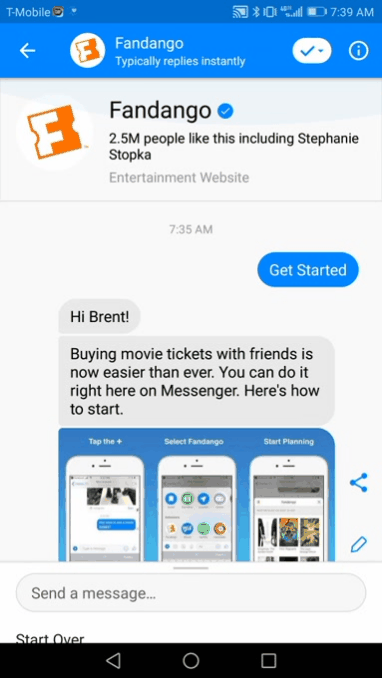
Fandango proves that in some cases, a chatbot can be just as powerful as your traditional service.
Enabling users to find movie times based on location, the chatbot zeros in on exactly what’s showing near you and likewise lets you purchase tickets directly.
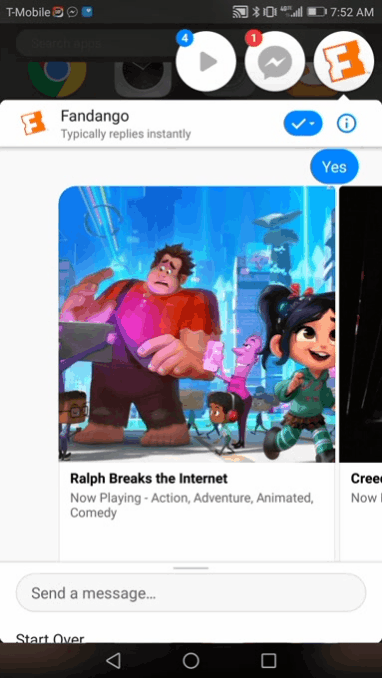
This serves as a sort of quicker alternative to mulling around their app or site while on-the-go.
2. CNN
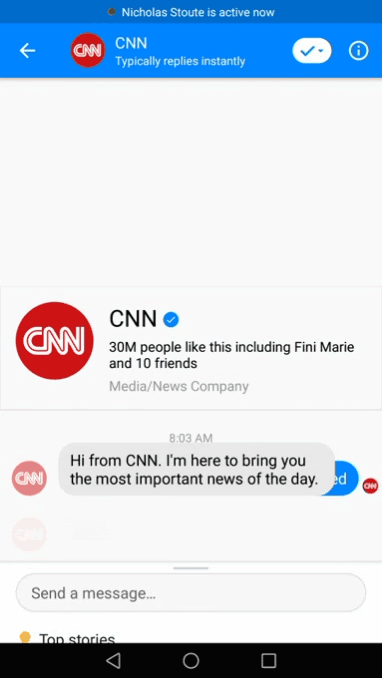
Social chatbots aren’t solely about commerce or customer service. CNN’s bot allows for personalized content delivery, allowing users to filter top stories and get relevant stories sent directly via Messenger. This keeps users in the loop without having to worry about being hit with headlines they don’t care about.
In an era where information overload is a huge problem and people are consuming so much media on-the-go, this bite-sized form of content delivery makes perfect sense.
3. H&M
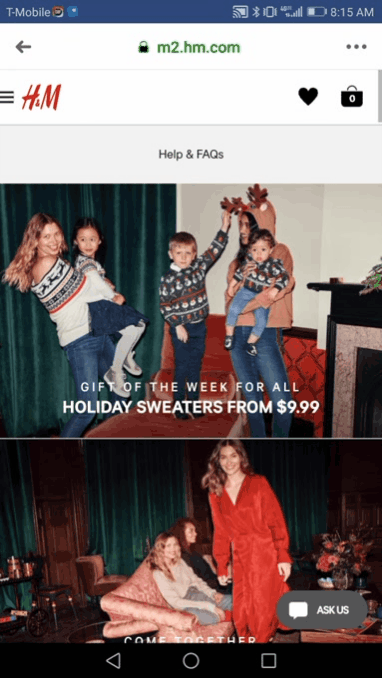
While accessing H&M via Facebook, the store provides a sort of digital concierge to help shoppers make decisions on their fashion choices. Given the rise of mobile ecommerce, these sorts of bottoms have big-picture implications for such brands’ bottom lines.
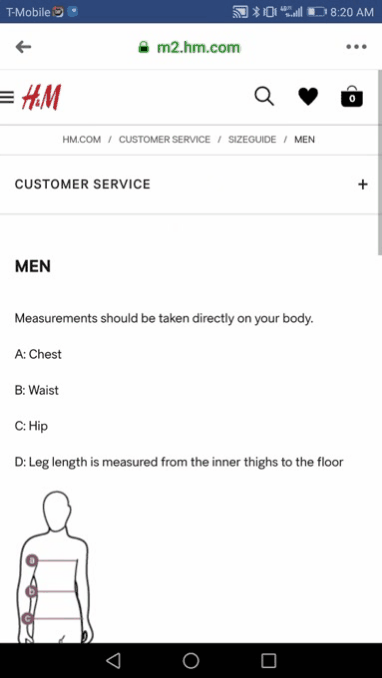
The assistance bot’s ability to hone in on styles and sizes ultimately helps the user make a decision and convert as a result.
4. Qantas
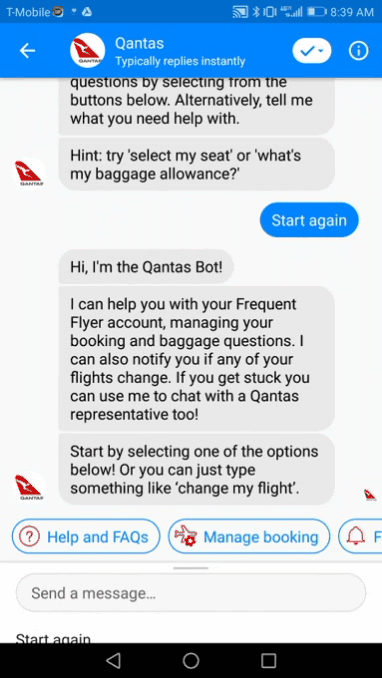
Qantas’ chatbot is a shining example of just how practical a bot can be.
For example, let’s say you’re on-the-go and need to make immediate changes to your upcoming flight. In this case, the bot is here to manage the fine details of your booking and answer questions accordingly.
And as is the case with many modern bots, Qantas also provides the option for users to message an actual customer service rep if that’s more their jam.
5. Hello Fresh
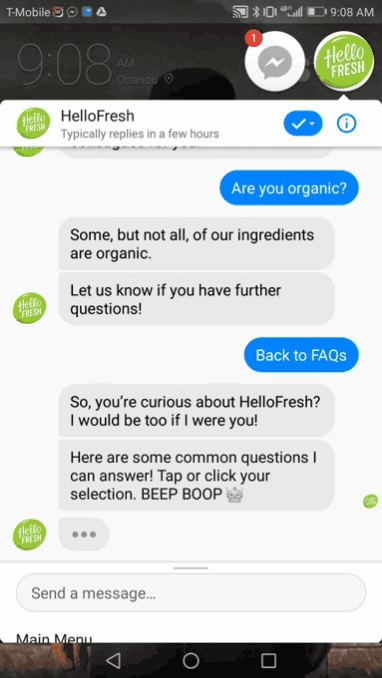
Hello Fresh’s chatbot provides a sort of knowledge base and comprehensive FAQ for their product. The ability for users to ask a ton of questions not only familiarizes themselves with the brand, but continuously encourages them to engage with the bot.
Another nice touch is Hello Fresh’s decision to be self-aware and humorous with the bot’s tone (see: “BEEP BOOP”). Anyone messaging a bot likely knows what they’re getting into - a bit of humor can make the experience more pleasant.
Oh, and Hello Fresh also tacks on a smart upsell via initial discounts for signing up via their bot.
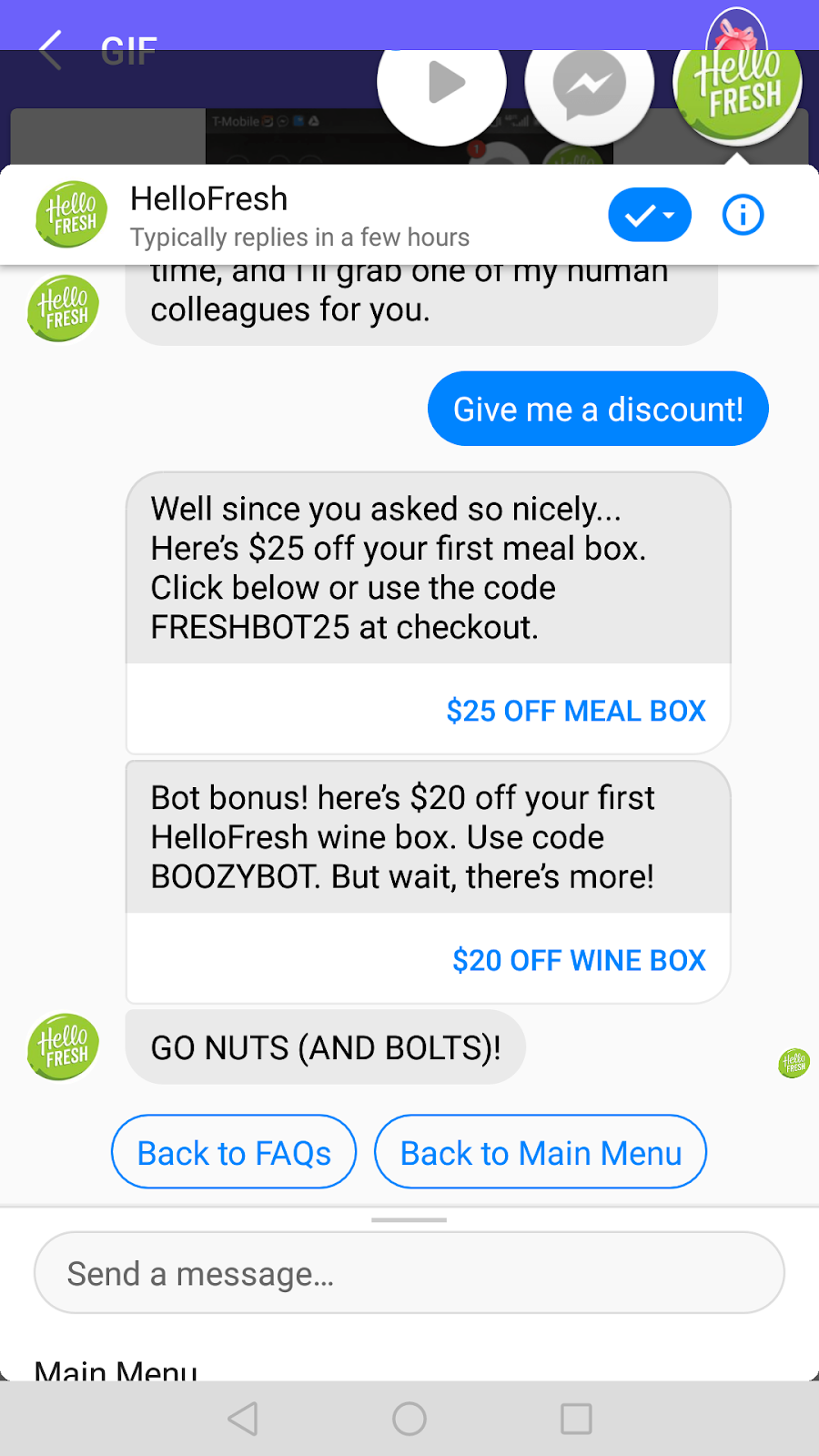
6. Gymshark
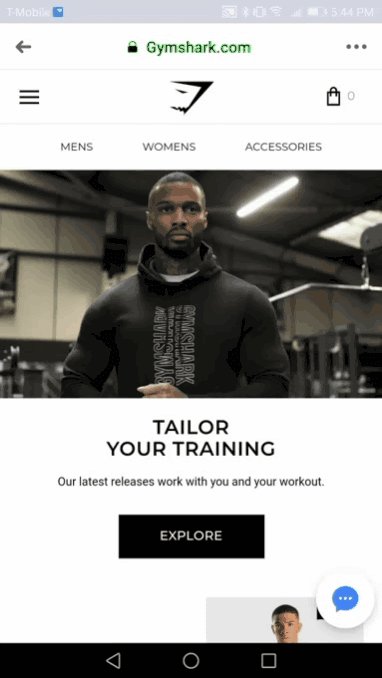
Gymshark’s livechat accessed from Facebook is a good example of how social chatbots go beyond social (and, well, chatbots).
The ability to select the specifics of your query helps the person on the other end prepare a personalized solution. The busy message at the end might seem like a bummer, but it does well to set expectations for the user rather than have them assume they’re getting an immediate response.
7. PayPal
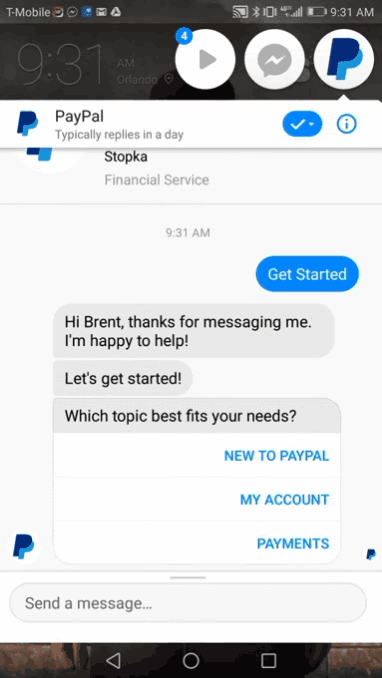
PayPal proves that bots can be excellent at onboarding. Allowing users to sign-up directly from the bot and check out an explainer video represents a great user experience rolled into this surprisingly robust chatbot. This is notable considering that PayPal doesn’t offer livechat on its actual site (see below).
Oh, and this sort of accessibility again points to the power of social chatbots and why making your business more available to potential customers really can’t hurt.
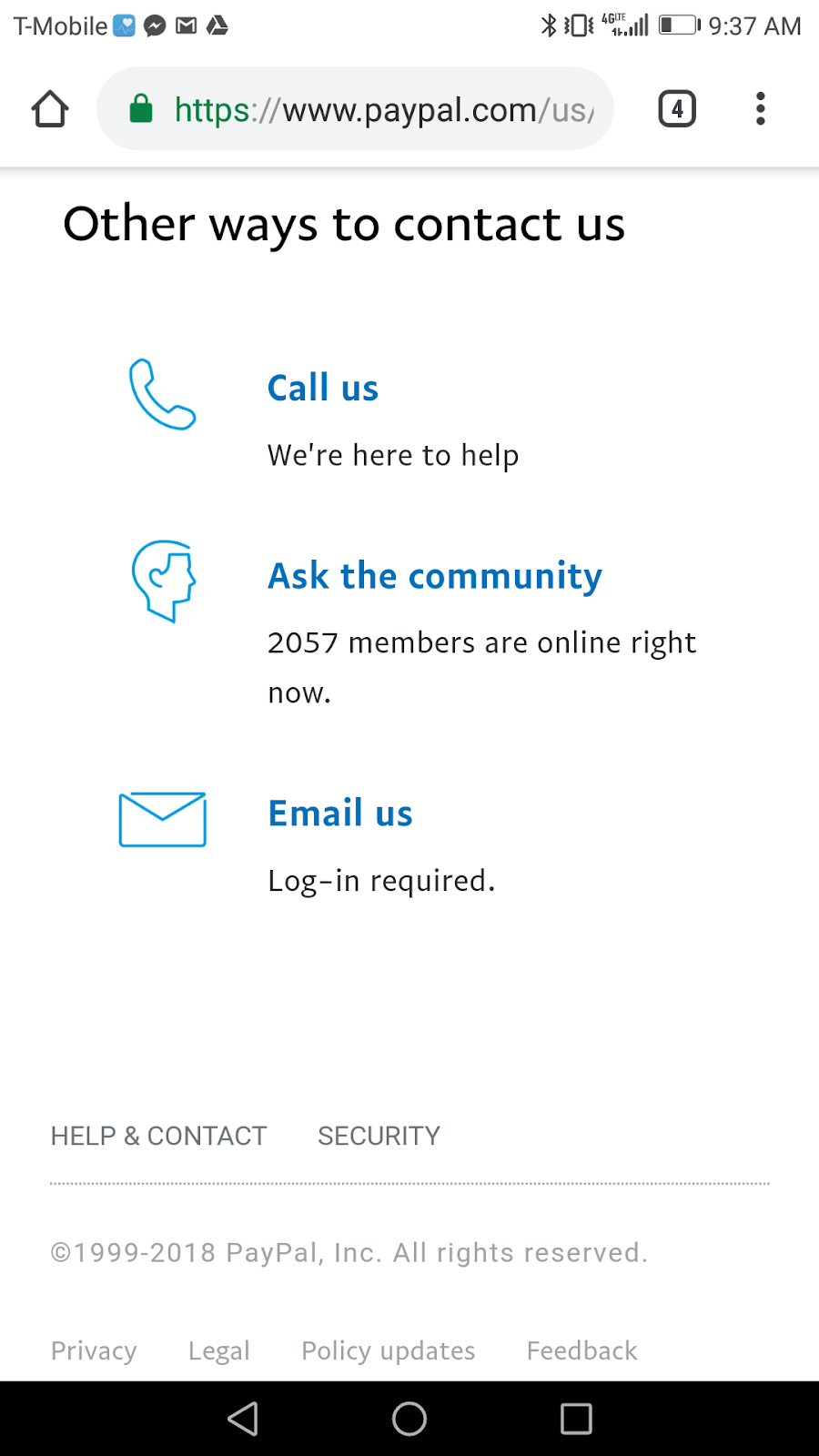
8. Spotify
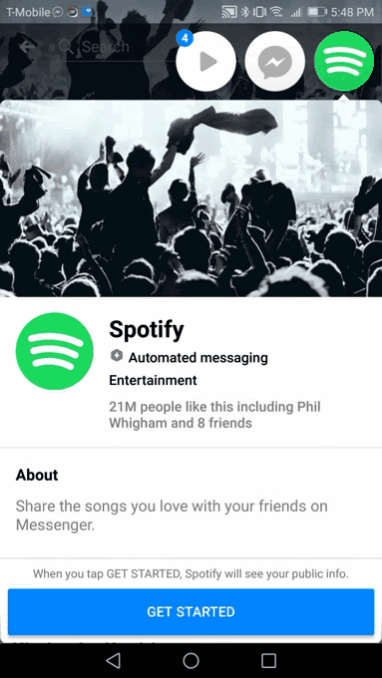
Spotify’s chatbot highlights the service’s latest features, including Messenger-specific playlists and new music. For brands already providing a mobile experience, finding new ways to integrate that experience into Facebook is a no-brainer. Bots can do exactly that in addition to offering a place for customers to ask questions, just as Spotify does.
9. Sephora
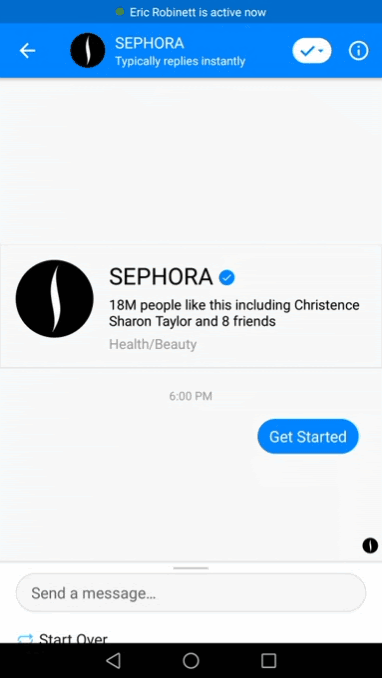
Sephora offers a rather straightforward yet personalized shopping experience through their bot. Users have the option to shop recommended looks or “try on” makeup using their phone cameras (pretty cool, huh?). As with most brands offering direct shopping via their chatbot, Sephora also encourages users to get in touch with an agent if they have any more specific questions.
10. Samsung
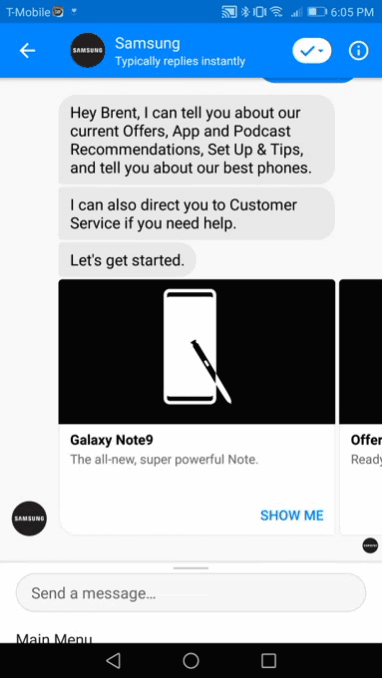
Samsung’s bot boasts exclusive offers, deals and recommendations which again signal the transactional potential of social chatbots. In addition, users are able to manage their accounts or speak directly to a customer service rep. Such a chatbot essentially provides a central “hub” of Samsung smack dab in their customers’ smartphones.
How Can Businesses Get on Board with Chatbots?
At this point, your head is probably spinning with ideas about what bots could do for you.
Or maybe you’re thinking about getting your feet wet with chatbots but don’t exactly know where to start.
Hey, you aren’t alone.
Thankfully, the barrier to entry for chatbots is arguably lower than ever. There is no “right” way to get started: it really depends on your budget, goals and level of tech-savvy.
Facebook provides some basic framework here for developers and what it takes to build your own bot.
And on a totally different end of the spectrum, there are tools like the previously noted Drift which provide bot builders which are focused more so on homepages versus the likes of social media.
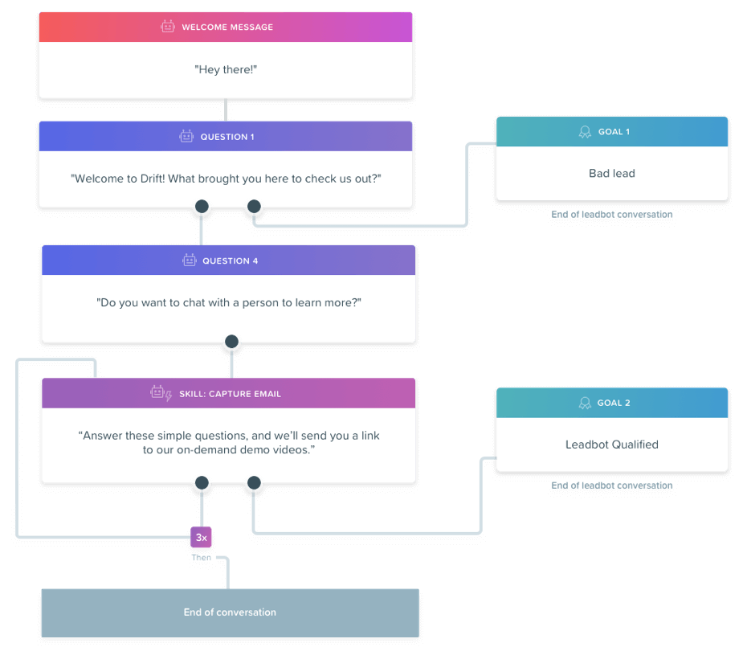
For newbies, a tools such as ManyChat is more than likely the answer. This drag-and-drop bot builder is especially affordable, with pricing tiered based on how many subscribers you’re engaging. In addition to programming back-and-forth with, users can also set up automated workflows to reach out to customers.

Nice, right?
Are Chatbots Really Here to Stay? (Spoiler Alert: Yes)
We’ll be honest: in some cases, chatbots still have a bit of a ways to go (see below).
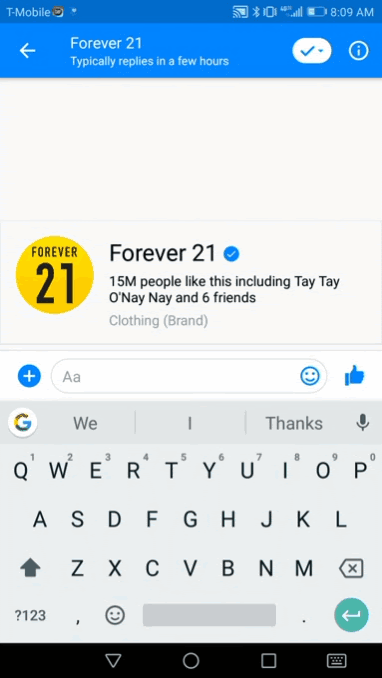
That said, the sheer popularity of social chatbots for brands both big and small is telling.
Businesses are looking to automate as much as they possibly can for the take of efficiency. Bots are huge piece of that puzzle as we can better automate and streamline tasks such as customer service and product recommendations.
Remember: bots represent a win-win for businesses and customers alike. Consumers are more comfortable than ever with them, as long as the bots are taking care of businesses.
And as chatbots grow more advanced and new features get into the hands of developers and third-party bot-builders, businesses will have even more options to engage customers.
Low barrier to entry? Check.
The ability to engage with more customers around-the-clock? Uh huh, that too.
The writing is on the wall: businesses today to explore what chatbots have to offer. No matter what industry you’re in, bots should most definitely be on your radar heading into 2019.







